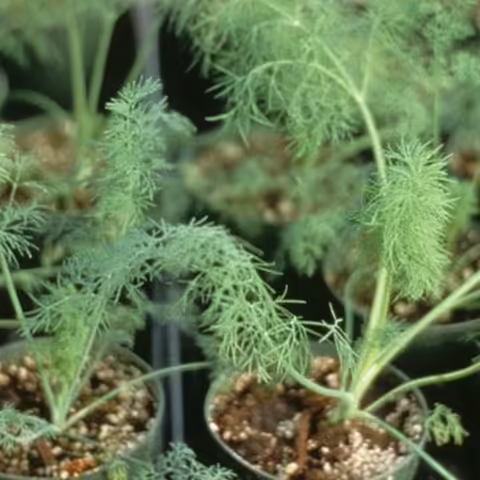Dill
Anethum graveolena
Dill is a tall herb with fine, feathery foliage. Foliage color can range from dark green to a blue-green. In mid-summer, dill will produce large, flat topped yellow flower clusters with seeds that can be harvested for culinary use.
Growing: Annual
Dill performs best in a full sun location in moist, well-drained soil. Dill does best when it is directly sown in the garden, because the taproot system makes it difficult to transplant successfully. Sow the seeds in the spring one to two weeks before the last frost. Because dill reseeds readily, plants left in the garden in the fall will drop seeds that will germinate in the spring. To insure a fresh supply of dill leaves, make successive sowing of dill every two weeks through the growing season as plants decline soon after they start to flower (bolt).
Popular Varieties
- ‘Mammoth’ – Standard, tall, fresh use dill
- ‘Bouquet’ – More compact, dwarf form of ‘Mammoth’
- ‘Fernleaf’ – Dwarf plant, fine, dark-green leaves. Slow to go to seed
- ‘Dukat’ – Fine textured foliage, very strong flavor
- ‘Green Sleeves’ – Excellent fresh dill productions, resistant to bolting
- ‘Ella’ – Short, dense variety good for container gardening
- ‘Monia’ – Compact variety good for container gardening
Harvesting
Both the foliage and seeds can be harvested for culinary purposes. Foliage can be cut at any time and used fresh, or it can be dried for later use. To harvest seed, allow the flowers to mature, usually 2-3 weeks after the blossoms appear. Cut the seed heads from the plants and place them in a brown paper bag. Hang in a cool, dry, well-ventilated place. Seeds will fall from the seed heads and be collected in the bag. Store in a sealed container.
Use
Used to flavor fish, lamb, egg dishes, soups and potato salad. Seeds are used in pickling recipes and vinegar.
